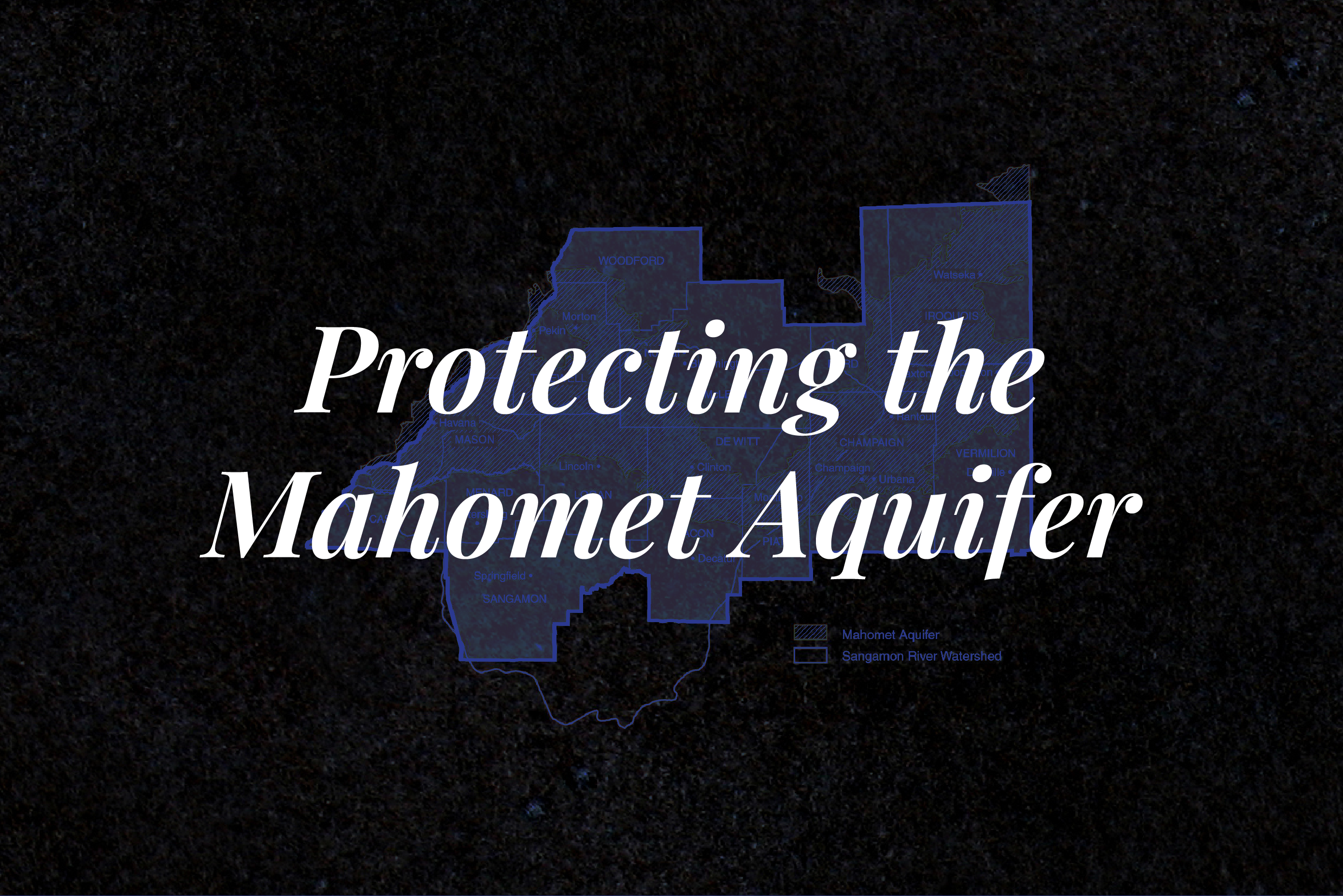Mahomet Aquifer
The Mahomet Aquifer is a vital source of drinking water for more than half the population in east-central Illinois. Which is why in 2015, the US Environmental Protection agency designated a portion of the Mahomet Aquifer as a “Sole Source Aquifer.” That designation provides additional protections for the nearly one million Illinoisans who rely on it for their primary source of drinking water.
Contrary to popular belief, aquifers are not large underground lakes. An aquifer is a body of rock or sediment that is completely saturated – water is in it and all around it. It can be made of sand, gravel, sandstone, or other rocks that can store or transmit water. What goes in an aquifer stays in an aquifer.
The water within an aquifer often begins as rain or snow melt that seeps into the ground. The amount of water that makes its way to the aquifer varies widely from place to place depending on the type of surface and underlying soils. Once underground, water will continue to be pulled downward until it reaches an impermeable layer of rock. The movement of water through rock acts as a natural filtering process, purifying the water and removing sediment. Sooner or later water will eventually leave the aquifer and need to be replenished through a process called “recharge.”
Although some of the water sampled from the Mahomet Aquifer routinely date between 1,000 and 12,000 years ago, the Aquifer itself was created over one million years ago when the sand and gravel it’s made up of was deposited in a river valley. The river was later overtaken by floods and permanently altered, and the valley was covered by sediment from glaciers more than 130,000 years ago.
Today, Mahomet Aquifer supplies water to residents in 15 Illinois counties (Cass, Mason, Menard, Sangamon, Logan, Tazewell, Woodford, McLean, De Witt, Macon, Piatt, Champaign, Ford, Iroquois, and Vermilion). The Mahomet Aquifer is one of 68 Primary Aquifers in the United States that provides 45 percent of the Nation’s drinking water.
Although the water is purified through its passing of the sand and gravel, it can still harbor contamination from waste disposed at the surface of the Aquifer. Nearby landfills or areas where chemical waste is contained or disposed can contaminate the groundwater stored in the Aquifer. Additionally, recent passage of legislation allowing carbon sequestration raised concerns by residents that the safety of their drinking water may be threatened.
Earlier this year, State Representative Wayne Rosenthal casted a no vote on SB1289, legislation that allows for carbon sequestration activity that could adversely affect the Mahomet Aquifer and surrounding land.
Rep. Rosenthal said this: “Many landowners do not want any form of government allowing construction of CO2 pipelines through their farmland because of eminent domain concerns. As of now, the Mahomet Aquifer has no protections under SB1289 and that’s a major concern for residents and it should be for legislators too.”
Following the passage of SB 1289, Republican lawmakers signed a letter to Governor Pritzker emphasizing the risks carbon sequestration poses to drinking water and urged a ban on injecting CO2 waste through and under the Mahomet Aquifer. The governor had not responded to the letter and signed the bill into law, effective January 1, 2025.
